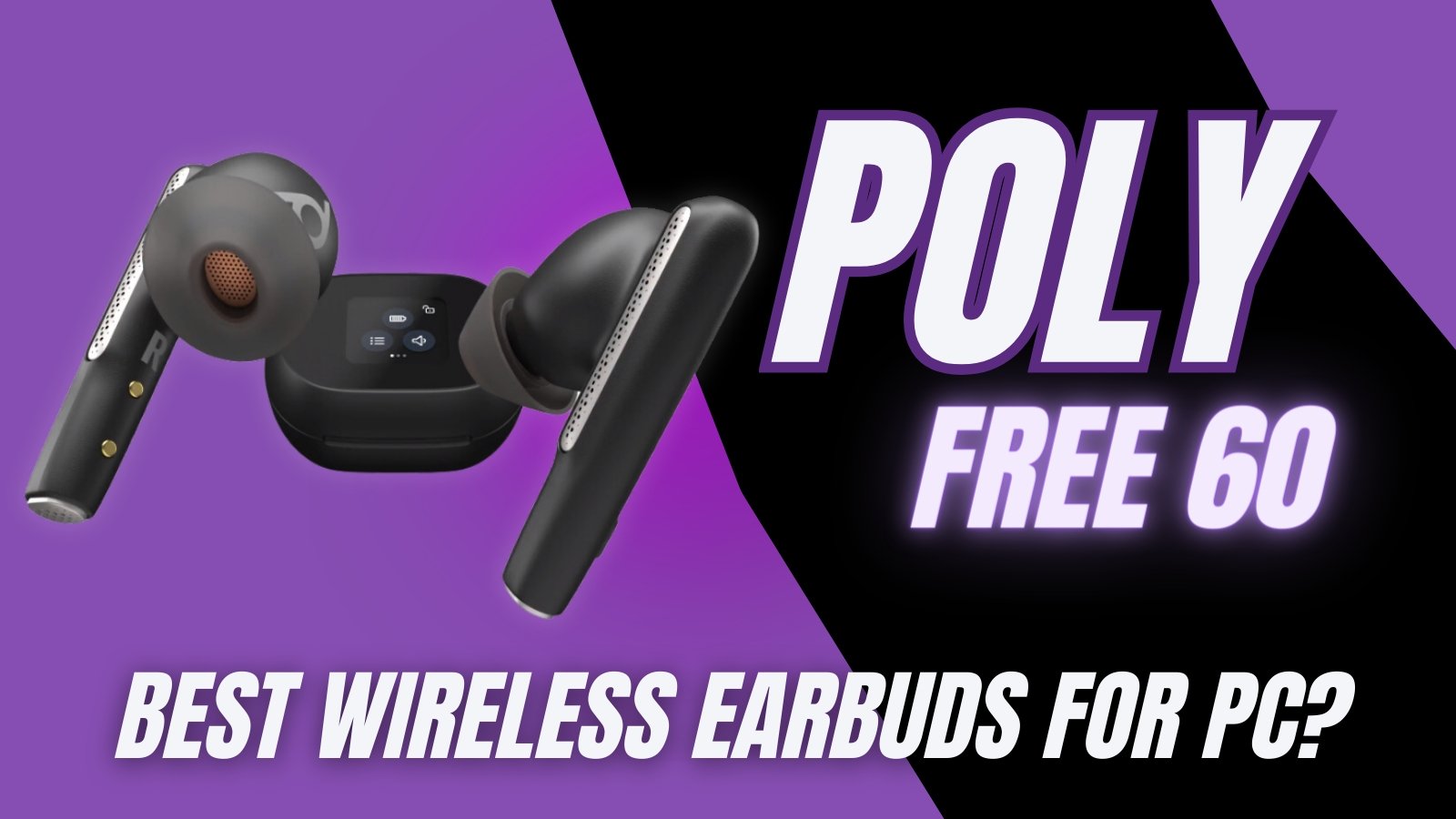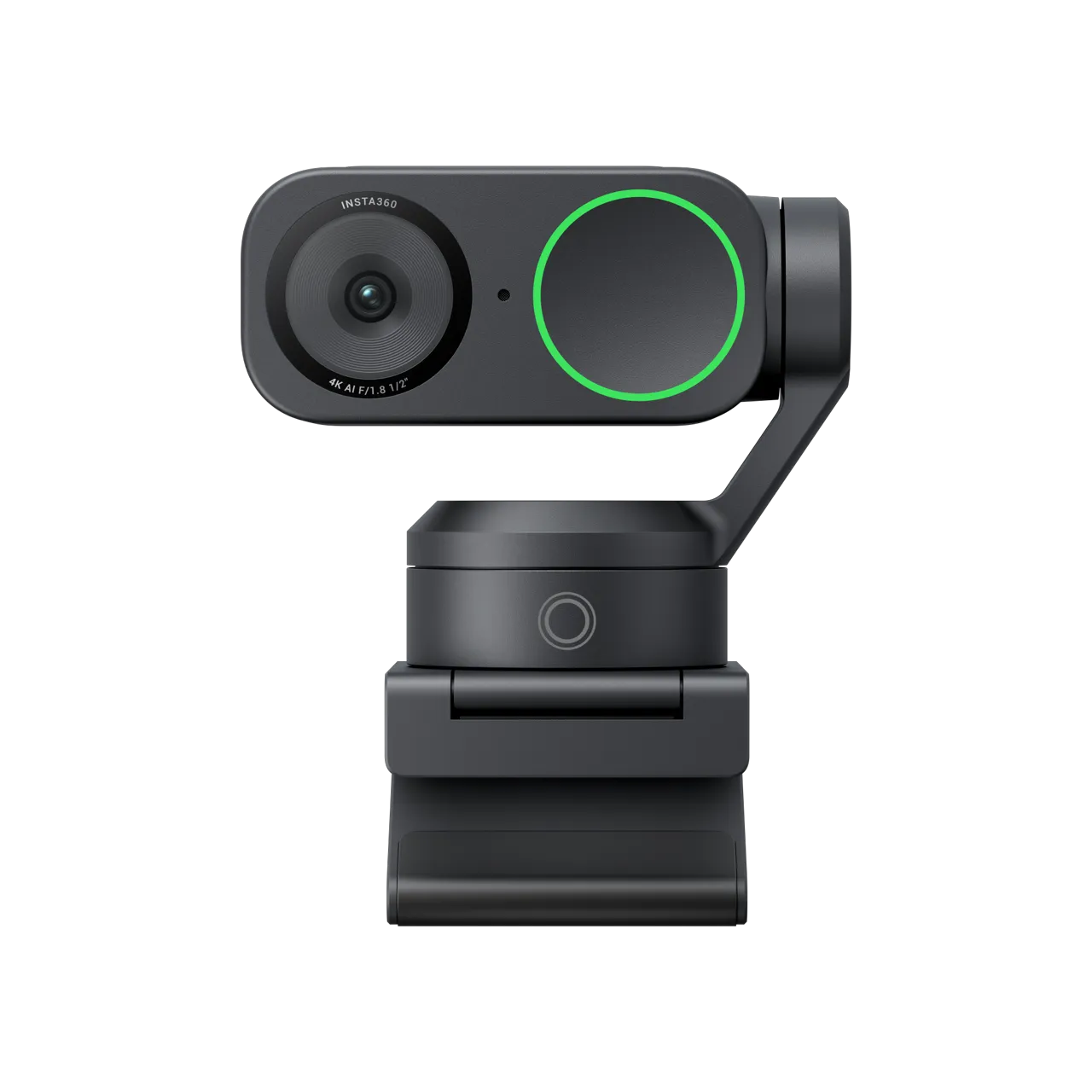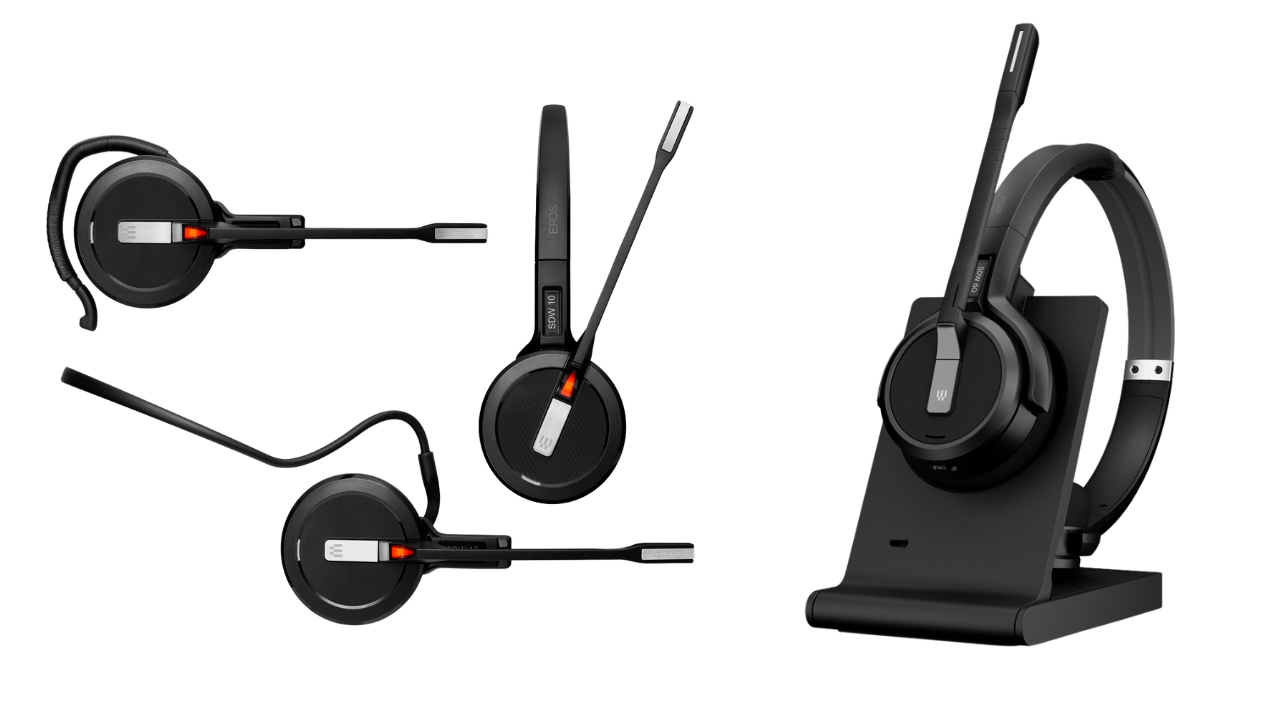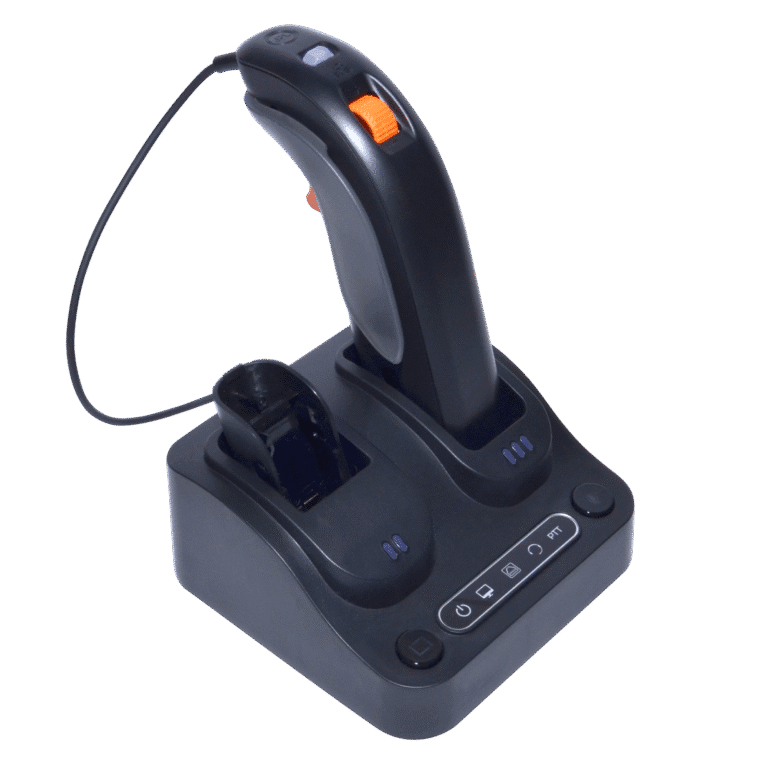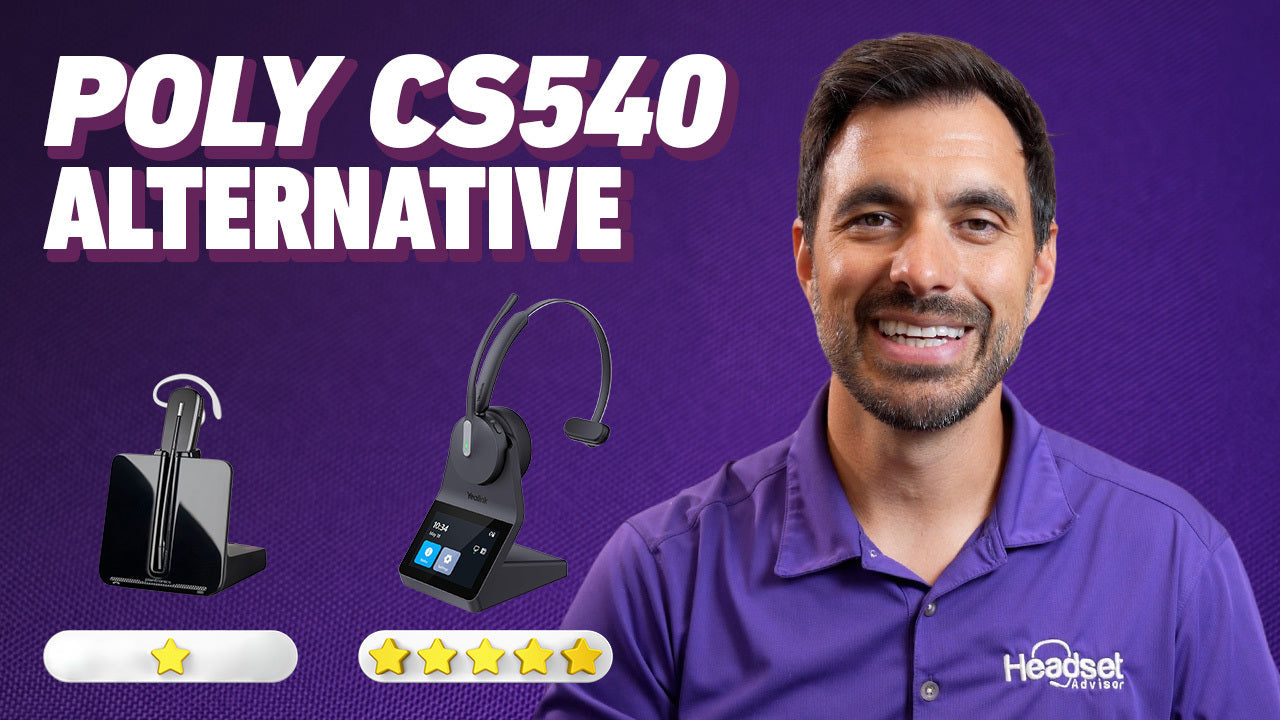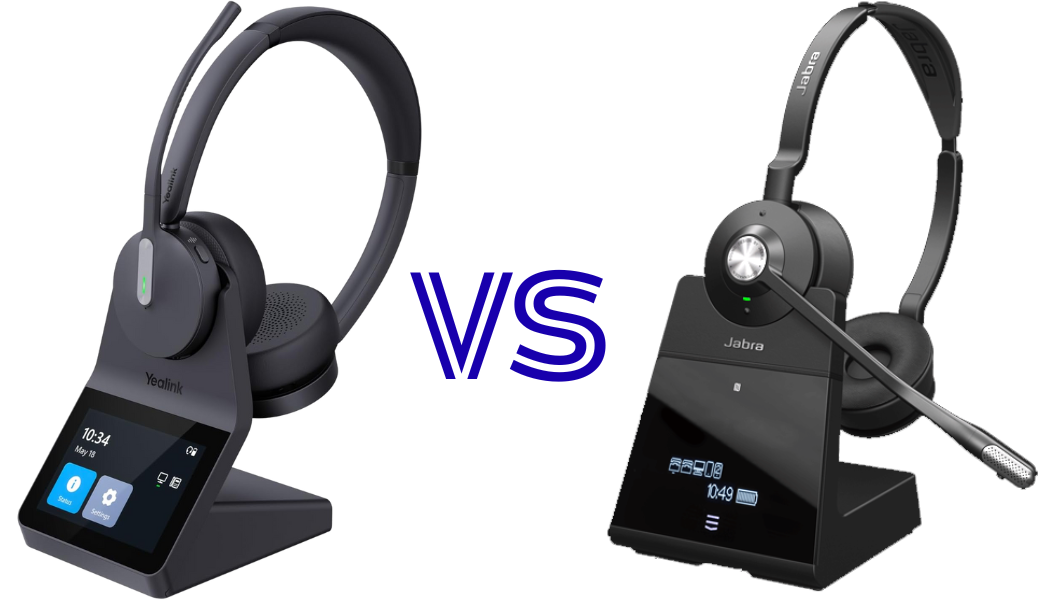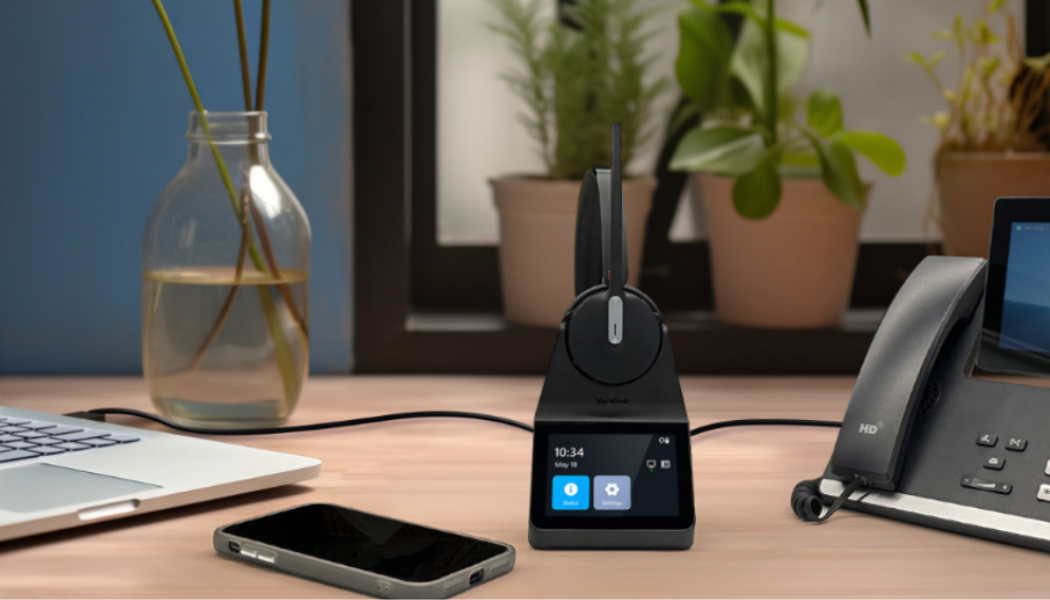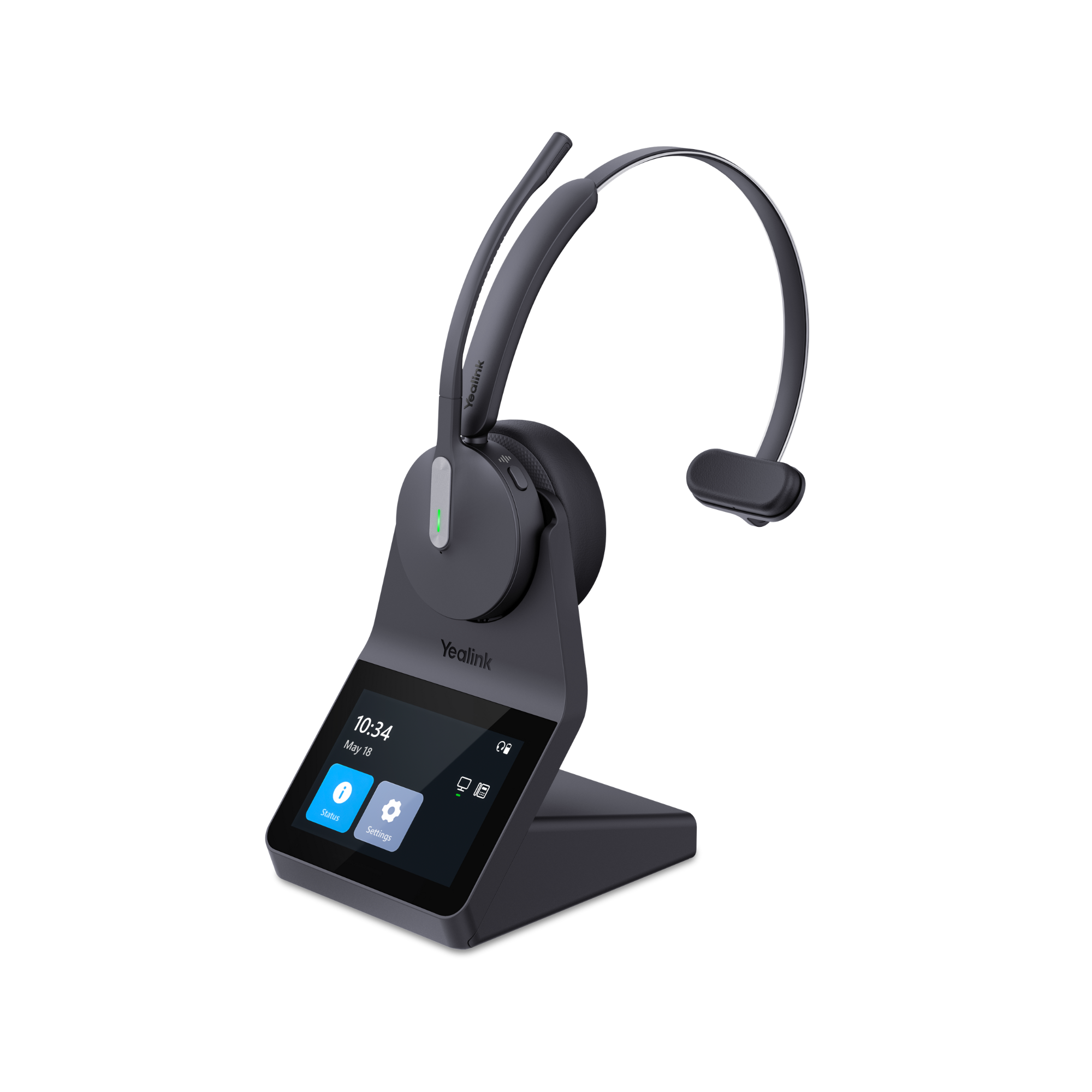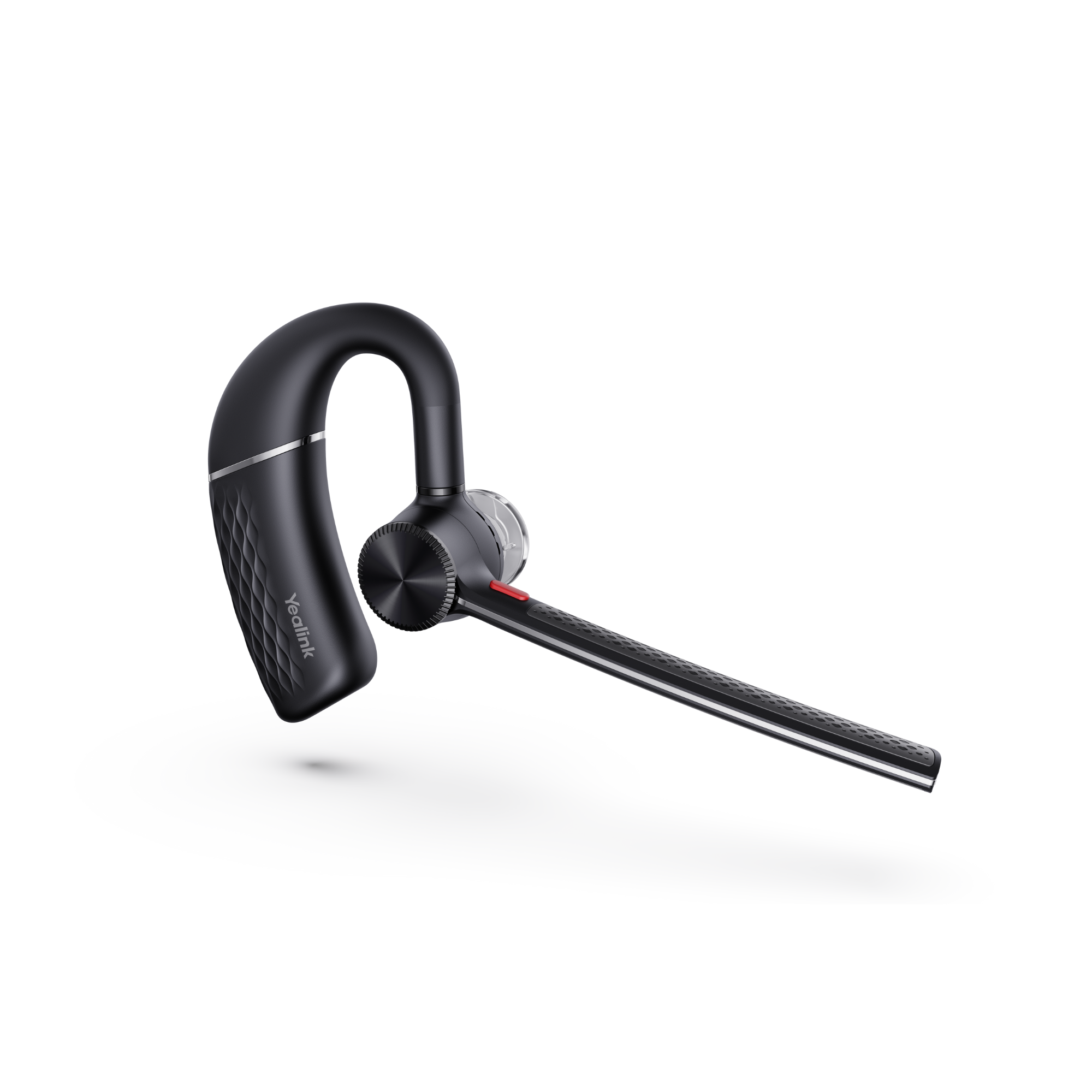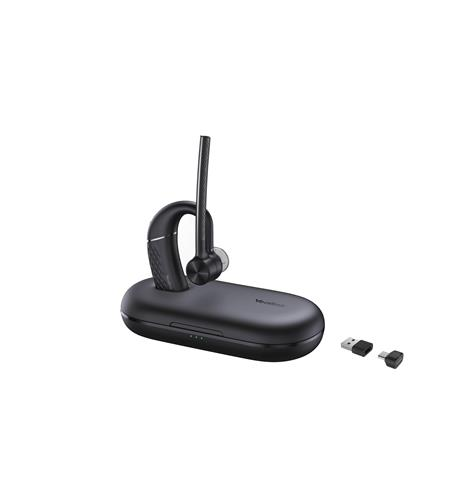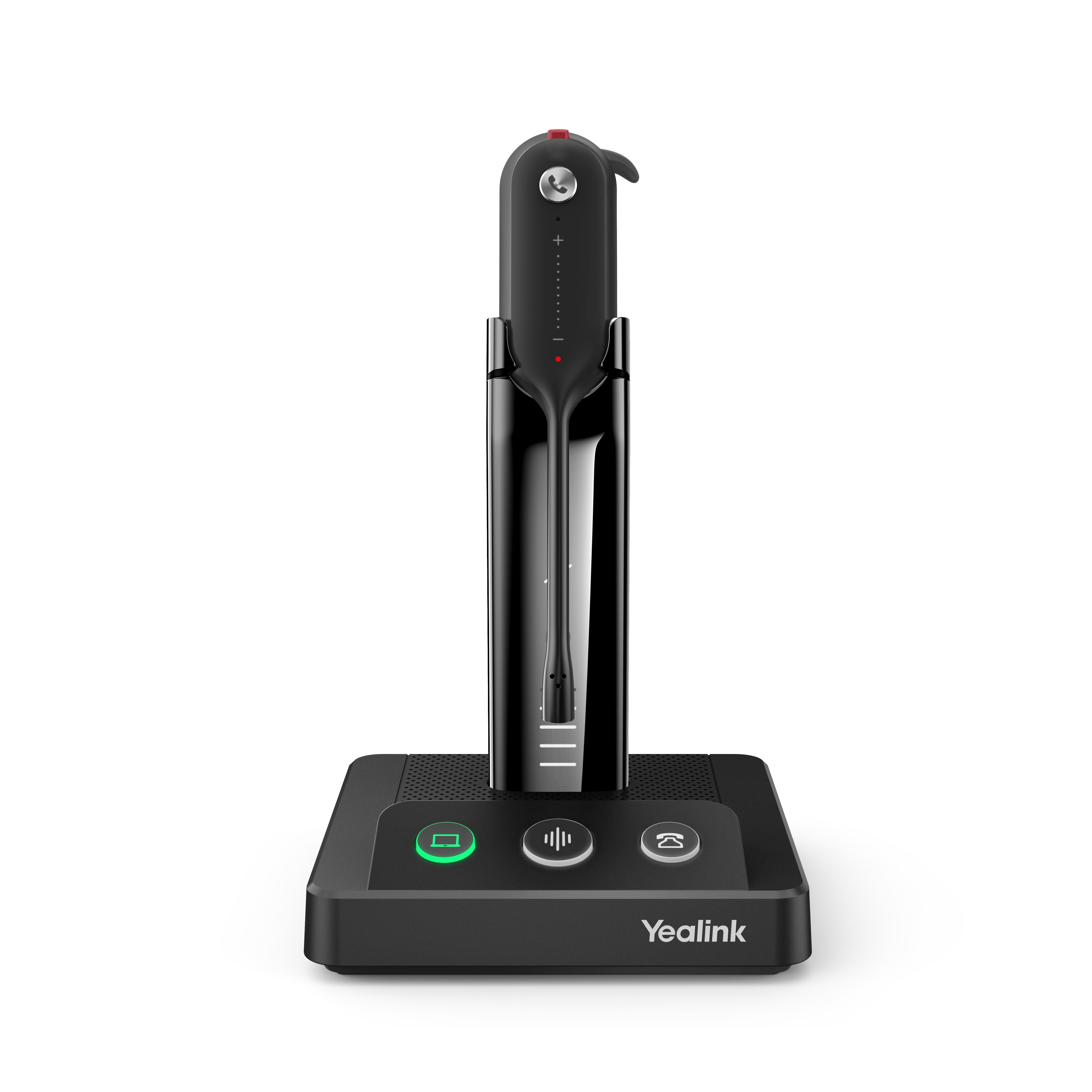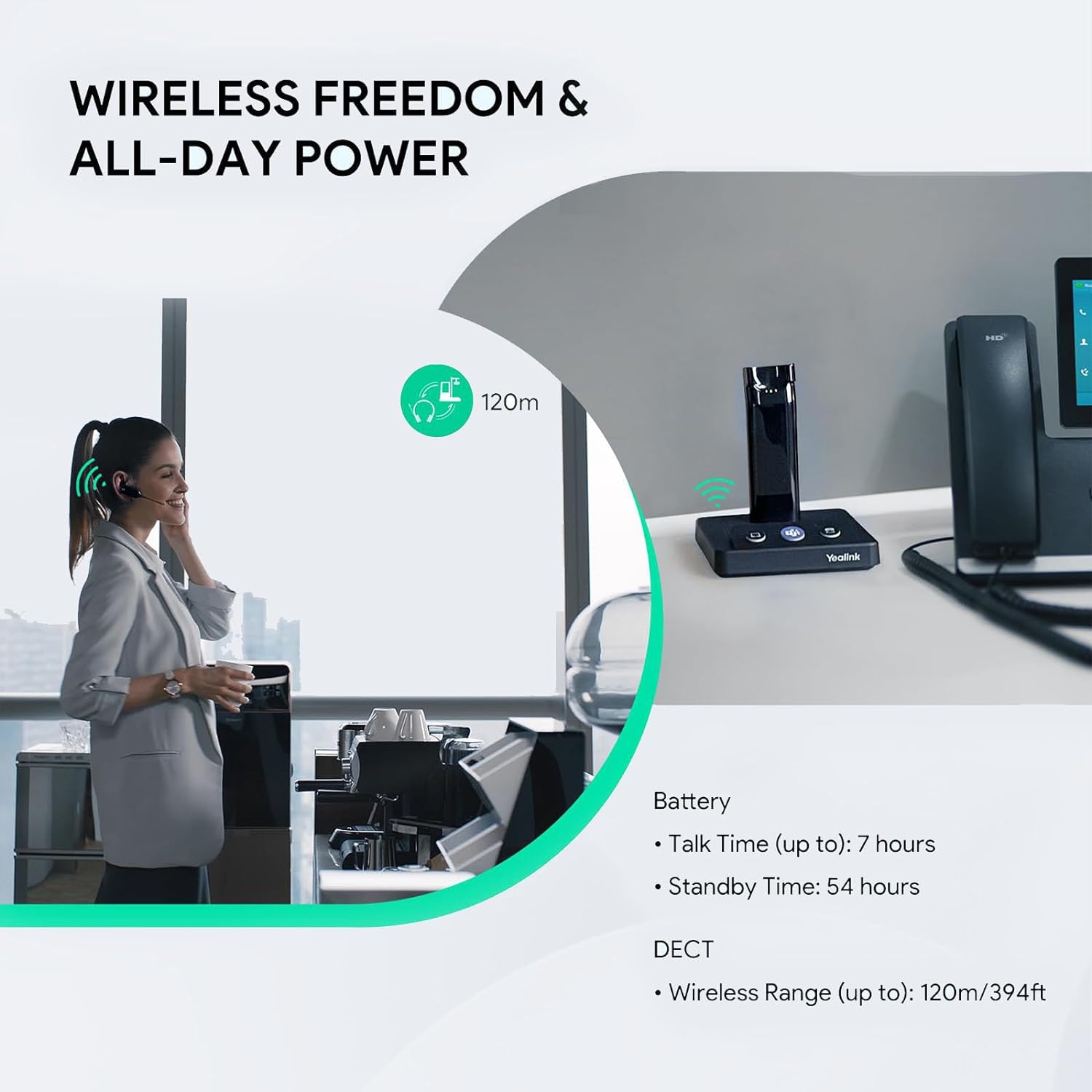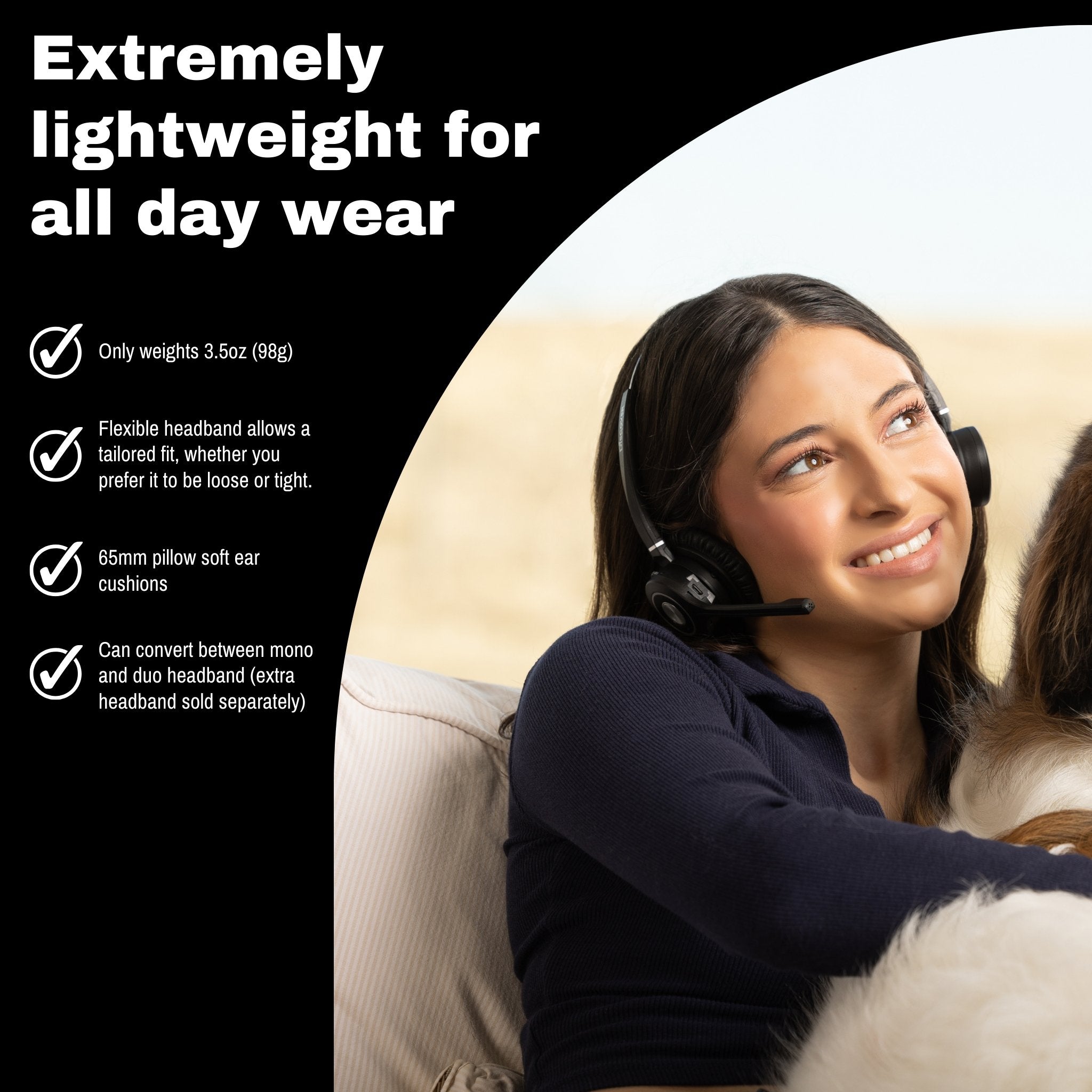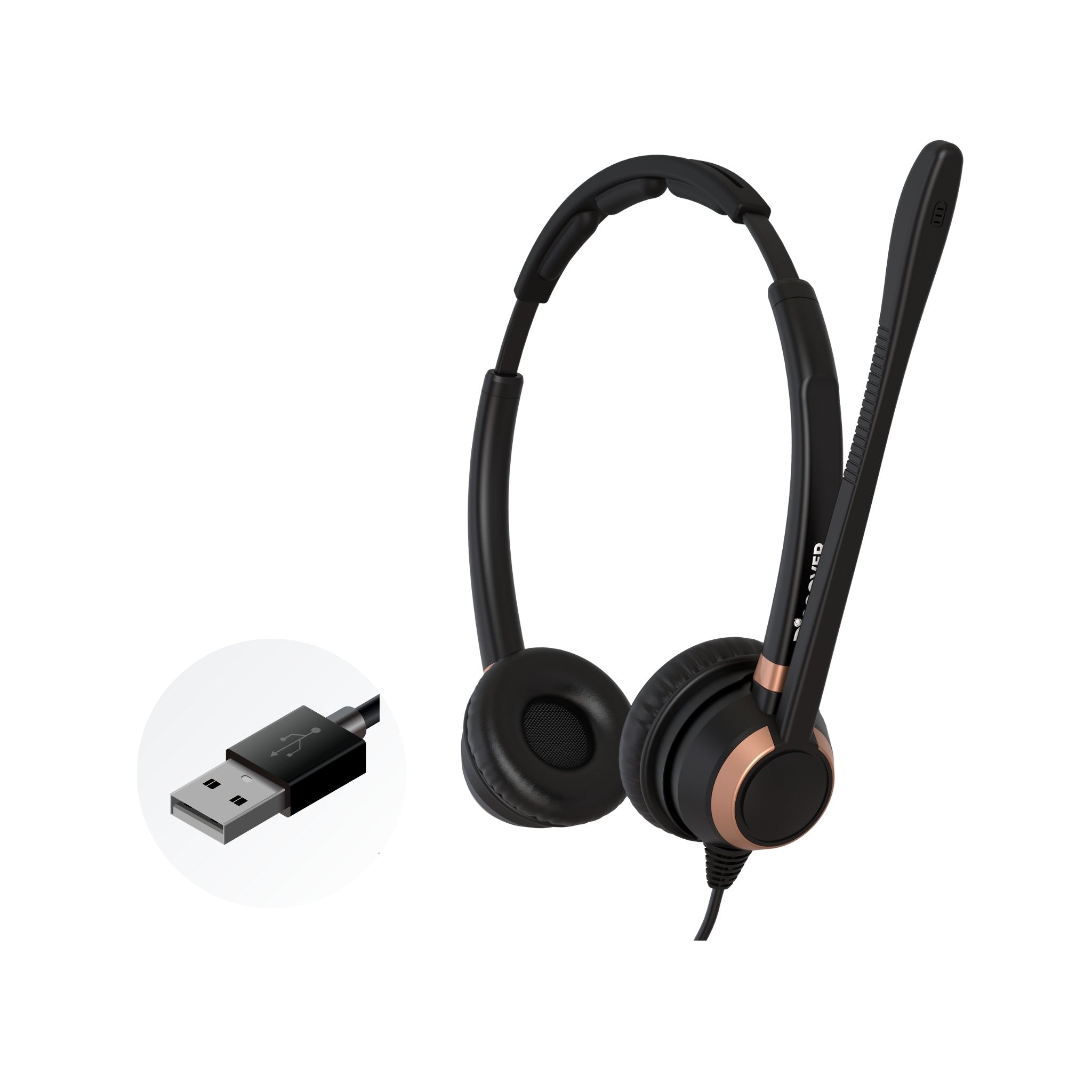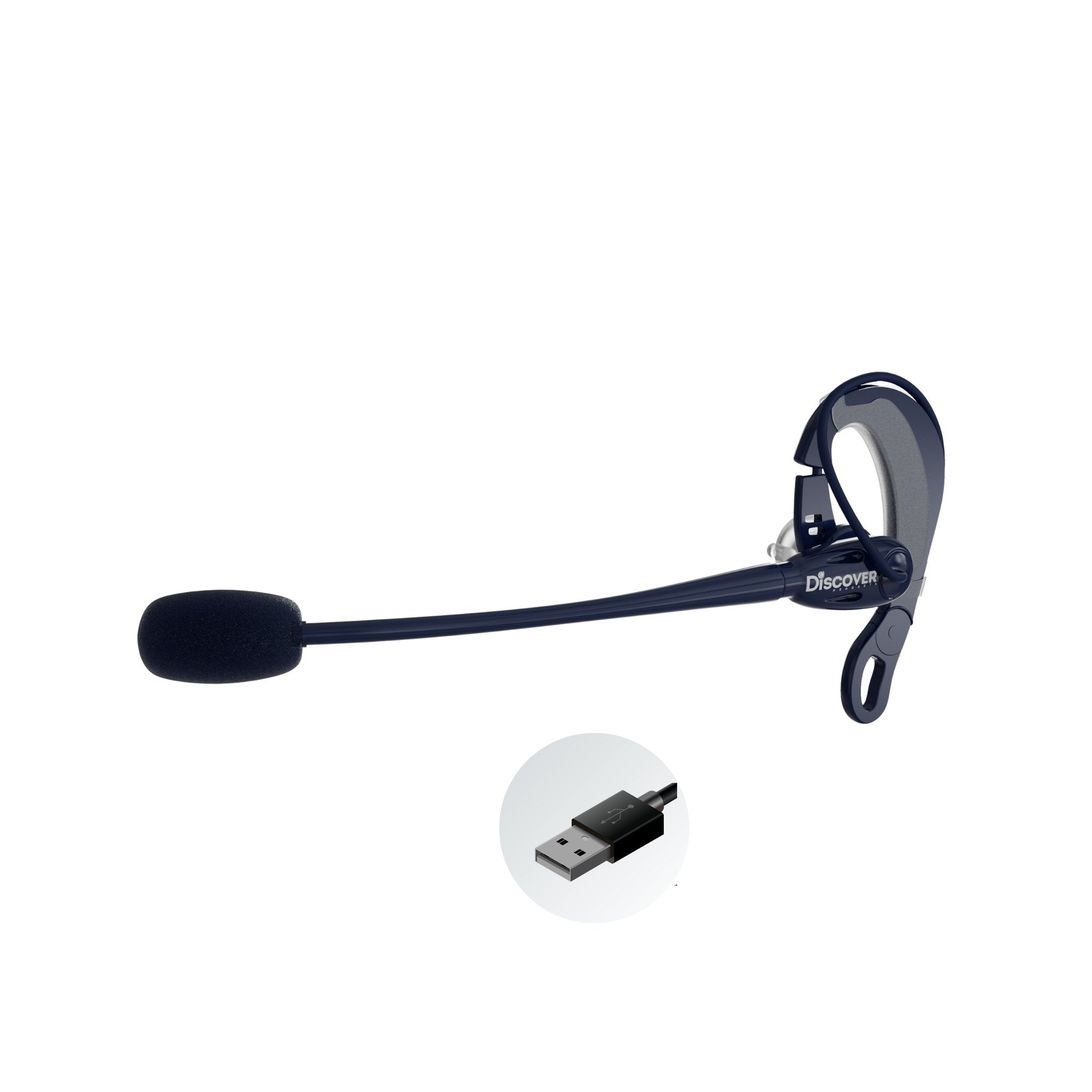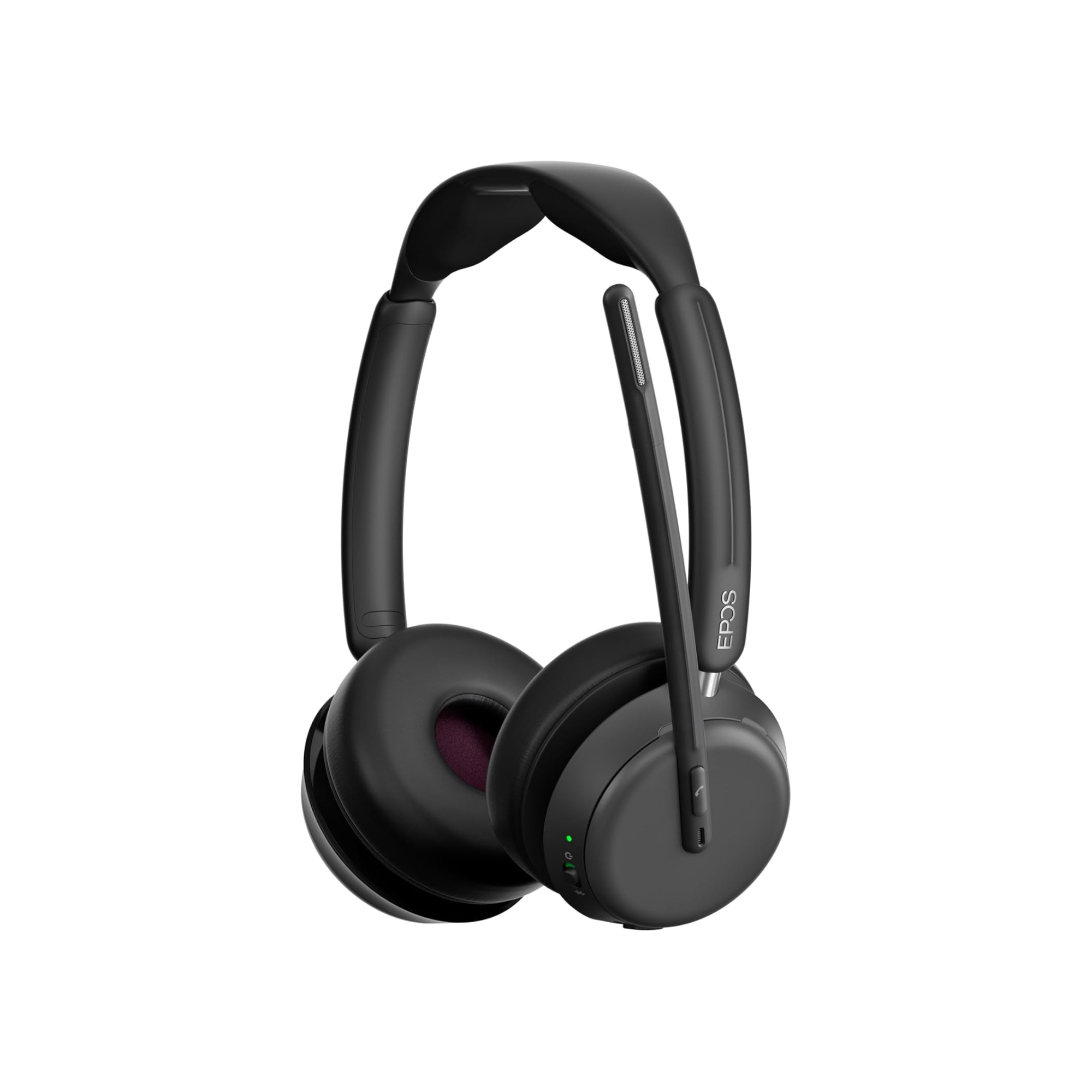With so many great choices of boom microphone headsets, there remains a loyal fanbase of people who prefer using earbuds for business communications rather than a traditional headset.
The reasons are varied, and include the fact that earbuds are small, and less bulky than your typical business headset. And the truth is, given a choice between a small, unobtrusive looking headset compared to one that’s significantly larger, many prefer the smaller option, and understandably so.
Earbuds are also a familiar device because many use them for casual use on tablets and smartphones, which makes them an attractive consideration for using on business calls as well, simply because it’s something they’re familiar with, and used to using.
Whatever the reason that earbuds are used for business calls, they typically come up short in a variety of ways when compared to those larger boom microphone headset options. For example:
- Battery. Earbuds have been known to provide limited talk time before a recharge is needed. That can be problematic if you have a busy day scheduled that includes a lot of conversing. Many traditional headsets have batteries that provide as much as 40 hours of talk time before a recharge is needed. Earbuds, by comparison, seldom offer even 8 hours.
- Microphone sound quality. Unlike a boom microphone that positions the mic in close proximity to your mouth, earbuds have microphones close to your ears. Not ideal, but not a deal breaker by any means because some earbuds actually sound decent, but typically in quiet environments. Still, boom mic headsets will generally give you superior sound quality over most earbuds.
- Noise reduction. Whether you work in an office with noisy coworkers or at home with children, and spot the wonder dog, or on the go, having your callers hear the noises around you can be distracting, and be counter-productive. Earbuds have a well-earned reputation for having poor noise reduction in spite of many claims of having it.
- Remote call answering. A hugely popular feature found on most wireless headsets is remote call answering. So if you step away from your desk, you’ll know when you’re receiving an incoming call, and you can then answer it straight from the headset. That helps to avoid the need to run back to your desk to catch the call, assuming you can hear it when you’re away from the desk. Missing calls can lead to voice messages to wade through which takes time to listen to, and respond.
Most earbuds don’t come with remote call answering capabilities because they either don’t have USB adapters, or they’re not optimized for use with the leading UC platforms such as Microsoft Teams, Zoom, RingCentral, Cisco Jabber etc.
In spite of these drawbacks, two things going on:
- Manufacturers are making strides in resolving these issues by developing products that address these challenges.
- There’s no drop off in people wanting to use them, even for business calls, which is bold given the different issues associated with using earbuds for business calls.
That brings me to the point where I let you about the recent introduction of the new Poly Voyager Free 60 wireless earbuds for use with computers, and mobile devices.
In this blog, I’ll not only provide you with an overview of the new Poly Voyager Free 60 earbuds, but along the way, I’ll be referencing or comparing The Free 60 to the Apple Airpods 3rd generation. That’s because the Apple Airpods are perhaps the most popular earbuds on the market today, and a lot of people use them on business calls. So to me, it made sense to use the AirPods as my source for comparison.
Before I get started, I thought you might want the option to watch our Poly Voyager Free 60 review video rather than reading this entire blog. If that’s something you’re down for then here you go.
BLOT - Bottom line on top.
Up front, do I like the new Poly Voyager Free 60 earbuds? Absolutely! And keeping in the context of this blog, do I like them better than the Apple Airpods? Again, I have to say yes.
What led me to this conclusion is outlined in this blog. So with that in mind, let’s find out what makes this an appealing earbud consideration if this is your preferred headset wearing style.
Connectivity
Like many earbuds, you can use the Poly Voyager Free 60 earbuds with a computer, for your voice or video calls, or you can connect them to your tablet or mobile phone. Switching between devices we found to be easy, and seamless. And like many Bluetooth connected devices, you can maintain two simultaneous connections. So, nothing out of the ordinary here, except for one thing:
A USB Adapter / Dongle is included!
The Poly Voyager Free 60 comes with a USB adapter whereas the Apple Airpods don’t. No big deal, right? Well, not so fast, because having a headset with a USB adapter gives the user some features and advantages you can’t get from one that doesn’t offer it. For example, having a USB adapter will give you:
- A more steady, reliable connection
- Better sound quality
- Longer wireless range
- Remote answer/end of calls
So, the fact that the Poly Voyager Free 60 comes with a USB adapter is a real advantage. And though the Airpods work great with iPhones and MACS, they aren’t nearly as good when used on a Windows machine. Plus, you don’t have the ability to answer an incoming call if you step away from your desk, which is a big deal if you plan on using earbuds on business calls.
The Free 60 uses the latest version of Bluetooth, which is version 5.3, which means it’s fully up-to-date with the latest Bluetooth technology, and connects to:
- Windows based devices - supports Microsoft Swift pair
- Mac OS
- iOS
- Android
Battery
The amount of juice you get out of the battery in the Poly Voyager Free 60 is comparable to the Apple Airpods. It gives you 5.5 hours of talk time, and 8 hours of listening time, and the charge case is good for an additional two charges. That takes it to 16.5 hours of talk time, and 24 hours of listening time.
To fully charge the battery in the Poly Voyager Free 60 earbuds requires 2 hours, and 15 minutes on the charger gives you 1 hour of talk time.
Charge case
When you compare the Poly Voyager Free 60 touchscreen charge case size to that of the Apple Airpods, you’ll find it to be larger. So if your intentions are to place it in your jeans pocket, it’s going to be more bulky than the Airpods case. But if you plan on using the Free 60 earbuds primarily for business purposes, especially if you’re a hybrid worker, then the case should be no problem because it will likely travel in a bag or case. And while I’m on the subject of the Free 60 charge case, the USB adapter stores away in it, which is nice because adapters are easily misplaced. This USB storage feature is only found on the 60+ model.
Not all headset charge cases are created equal
The single biggest differentiator between the case on the Poly Voyager Free 60, and the case you get with the Apple AirPods gen 3, besides the size difference, is a touchscreen on the 60+.
The Poly Voyager Free + UC includes a charge case that features a touchscreen. And I have to say that this feature is more than just a gimmick. Here are some of the things you can do through the Voyager Free 60 touchscreen on the charge case:
- Pair a new device
- Increase or decrease your audio volume
- Track forward or backward
- See your battery level
- Switch from one paired device to another
- You can also access a QR code on the screen for quick access to the user guide
All you need to do is swipe across the display screen until you find the feature you want, and then tap it to execute. This makes adjusting your hearing volume, changing music tracks, and other things very easy, not to mention convenient by having these controls in one place.
So for an extra $50.00, you get a charging case with a touchscreen, which I think is a reasonable price for a portable, charging case that gives you easy access to a variety of features. And I think most would agree that it’s just a cool feature too.
Where’d my USB adapter go?
Besides having access to these features on the case, it also gives you a place to store the USB adapter, which is something you won’t find on the other Poly Voyager Free 60 models, which are:
- Poly Voyager Free 60 Bluetooth
- Poly Voyager Free 60 UC - includes a USB adapter and standard charge case - no USB storage slot, and no touchscreen.
- Poly Voyager Free 60+ UC - includes USB adapter, a touchscreen charge case, and USB storage.
Flexibility times 3.5
And lastly, when you select the model that has the touchscreen, you’ll find that the package contents also includes a USB-C to 3.5mm cable for listening to audio from sources that require a 3.5mm connection. Note that when using this cable, it’s not designed to provide microphone access, so it won’t allow you to make or receive calls.
Solid sound - total focus
When you talk about sound, that’s a subject that can easily branch off into different directions. For example, sound could refer to:
- The sound you hear from your callers. This speaks to the sound you get from your earbuds speakers, and also the quality of the audio source from your callers.
- The sound you’re hearing from your background - This refers to the different sounds going on around you that are possibly causing you to be distracted.
- The sound your customer hears - This is about how good the earbuds microphone are projecting your voice, and also, how much unwanted background noise it’s eliminating.
The sound test results are in
With this in mind, how did the Poly Voyager Free 60 earbuds do in our Headset Advisor sound tests? Overall, quite good! Headsets with boom microphones are overall better, but as earbud headsets go, the Poly Voyager Free 60 did well in our tests.
- We tested the microphone for sound quality
- We tested the microphone’s ability to remove the background sounds of:
- Office noise
- Dogs barking
- Babies crying
- We also placed the Voyager Free 60 earbuds into our sound “ears” to test the fidelity of the speakers.
All these tests compared the Poly Voyager Free 60 against the Apple AirPods 3rd generation model.
The voice audio quality on the Apple AirPods was decent, but they struggled mightily when it came to eliminating the different background noises. In our tests, the different background sounds could easily be heard, which is not what you want when you’re on those important business calls. The sounds were noticeable enough that it could easily make you wonder if there’s any noise reduction in the earbuds at all.
Comparatively, the Poly Voyager Free 60 earbuds did a substantially better job at eliminating, or at the very least, significantly reducing the different background sounds. That matters if you’re shopping for a pair of earbuds to use with your computer for business purposes. If you value quality, then sound quality should be among the things you look for. And though earbuds in general don’t enjoy a great reputation for business grade voice audio quality, and noise reduction, I have to say that the Poly Voyager Free 60 earbuds did a solid job at both.
Sound quality, like many things, is subjective. And though I feel the Poly Voyager Free 60 earbuds sound better, and reduce noise better than the Apple AirPods, you might have a different opinion, and that's fine But to me, if I had to choose one, I'm opting for the Free 60 earbuds.
Speaker sound
We tested the Poly Voyager Free 60, and the Apple AirPods gen 3 countless times in order to determine which we felt were the better sounding earbuds. In the video we recorded, it sounded like the AirPods had the better sound quality. But, testing them personally, and not using the ears device used in making videos, and listening to many different sound tracks, I personally thought that the Poly Voyager Free 60 sounded a little better. Not a ton better, but to me, it had a slight edge on the AirPods for overall speaker sound quality.
You may have a different perspective on this, especially if you’re an Apple loyalist. But I listened to both earbuds extensively, and I’m going with the Free 60 earbuds based on speaker sound because to me, plain and simple, it just sounded better.
3 sizes of ear tips
The Poly Voyager Free 60 comes with ear tips in the sizes of small, medium and large so you can find the size that works best for you. I know, the AirPods come with the same, plus an XS.
Swipe the boom
On the Poly Voyager Free 60, you can swipe up, and down the mini boom to do things like raise or lower the hearing volumes, mute/unmute, or change audio tracks. This gives you easy access to these features with a simple swipe of your finger.
ANC
Active Noise Cancellation on the Poly Voyager Free 60 is standard. Anyone who’s used ANC in the past will recognize this feature as a major plus on these earbuds. If for no other reason that ANC isn’t a common feature normally found on earbuds. So if you want to better block out unwanted background noise so you can stay in the concentration zone, ANC is a great feature to have included.
What's ANC?
If you’re not familiar with ANC, it’s simply an electronic feature that’s designed to counter incoming noise, dampening or eliminating it, so you aren’t distracted by it. Unlike a noise canceling microphone which is designed to give your callers a better quality call, ANC is designed to give the person wearing the headset a distraction free experience.
Who’s your bud?
Single bud, double bud, your choice. The Voyager Free 60 allows you to use both earbuds for stereo sound, or you can use either earbud alone. This means you can charge one bud, while using the other. You can then rotate out one for the other, and continue working. It’s sort of like having unlimited talk time.
Earbud removal not required
Transparency convenience. Anyone who’s worn a headset for a period of time knows the frustration associated with continually taking off, and putting on a headset whenever someone approaches you for a discussion. Poly has addressed that problem in the Voyager Free 60 earbuds by incorporating transparency mode in them.
So whenever someone approaches you while you’re wearing these earbuds, you won’t need to remove them from your ears to have a conversation. Instead, tap transparency, and the buds stay right where they belong; in your ears ready for the next big conversation.
Options times 8
With the Poly Voyager Free 60 earbuds, you have several options to choose from.
- Earbuds alone
- Earbuds with a charging case
- Earbuds with a touchscreen charging case
- USB-A or USB-C Adapter
- Microsoft Teams variant for optimum interoperability
- Zoom Variant - same as above
- Carbon Black color
- White Sand color
If you'd like more information, you can go here to learn more.
So, depending on your needs, wants and budget, you’re bound to find Poly Voyager Free 60 earbuds that are right for your situation.
Buds with brains
The Poly Voyager Free 60 comes with built in smart sensors. These sensors do a number of things such as:
In-ear detection - Sensors in the earbuds detect when they are in your ears and automatically answer calls or play music. This prevents you from accidentally missing a call or losing your place in a song. And by removing the buds, it will turn the mute off and pause/resume music.
Touch controls - Sensors on the Free 60 allow you to control playback, answer and end calls, and mute your microphone without having to take your phone out of your pocket. This makes it easy to stay focused on your work or conversation without being interrupted.
Transparency mode - Sensors in the earbuds detect ambient noise and play it through the speakers so you can hear what's going on around you without taking your earbuds out. This is helpful for staying aware of your surroundings, such as when you're walking down a busy street or in a crowded room. It’s also useful if you just want to have a quick conversation with a coworker, without having to remove the earbuds which can become annoying if you get a lot of interruptions throughout the day.
Some benefits of having these smart sensors include:
- Increased productivity by reducing distractions
- Improved safety through enhanced awareness of your surroundings
- And better comfort through noise reduction.
3 is better than 1
It’s safe to say that the time, attention, and technology that goes into a headset’s microphone will have a direct impact on how it ends up sounding. So what went into the microphones in the Poly Voyager Free 60 earbuds?
First, there are 3 microphones in each earbud, making a total of 6 mics overall, which is a lot given the limited amount of space, and more than what most earbuds offer. These microphones triangulate your voice for optimizing voice sound quality. And, there’s no doubt that there’s something to this because in our microphone sound tests, the Poly Voyager Free 60 did a very good job not only in voice audio quality, but also in noise reduction.
Cuts wind noise
The Voyager Free 60 comes with Poly’s patented WindSmart technology which helps to dampen wind noise when you’re outside or on the go. So whether your plans are to use earbuds with your computer only, or wherever life takes you, you’ll have the peace of mind knowing that the Poly Voyager Free 60 earbuds are going to not only reduce background noise, but will also help to filter out wind noise.
For me personally, anytime I’ve talked with someone who’s outside or driving with their window down, I find it distracting to hear all the wind sounds during those conversations. We tested the Poly Voyager Free 60’s ability to remove wind noise by standing outside alongside a busy street, and I have to say, it did a good job to reduce the noise, and the wind sound.
Sidetone
Not to be overlooked is the fact that the Poly Voyager Free 60 earbuds also give you the ability to adjust sidetone. Sidetone refers to hearing your speaking voice in the headset speakers. Too little sidetone can make you feel uneasy, and even interfere with your ability to talk naturally because you’re unable to hear your voice.
Too much sidetone can be bad too because it can lead to echo of the person’s own voice echoing in the earbuds. This can be frustrating and something that interferes with your concentration.
The good news is the Poly Voyager Free 60 gives you the ability to select between low, medium and high sidetone settings. This makes it easy to find the amount of sidetone that’s right for you.
Software makes the hardware
Another thing that’s appealing about the Poly Voyager Free 60 earbuds is they’re part of the family of devices that are compatible with the Poly Lens software. This is something that IT professionals really appreciate. That’s because an entire population of devices can be monitored and managed from one desktop, locally or globally.
So whether you want to update the firmware for the latest security patches, or bug fixes for a single device or, throughout the entire enterprise, it can be done conveniently right from the desktop, which I think brings a lot of value.
You can do a lot of other things through the Poly Lens software as well, such as:
Deploy devices: Poly Lens makes it easy to deploy devices to users. You can create a provisioning profile that includes the settings and software that you want to install on the device. Poly Lens will then automatically deploy the profile to the device when it is connected to the network.
Monitor devices: You can monitor your devices for problems. If a device is having problems, Lens will send you an alert so that you can investigate the issue.
Troubleshoot devices: Poly Lens can help you to troubleshoot problems with your devices. It provides a variety of tools that you can use to diagnose and resolve problems which makes diagnosis and troubleshooting quick and easy without a site visit.
Manage users:The Poly Lens software can help you to manage users of Poly devices. You can create user profiles that define the settings and permissions that users have. Poly Lens will then enforce these settings and permissions when users connect to their devices.
Report on devices: It can also generate reports on your devices. These reports can help you to track device usage, identify problems, and make decisions about your device fleet such as identified problem areas, needs for device training and more.
Want more noise reduction?
If you have regular challenges with noise, and you’re interested in a headset that blocks out even more noise than the Poly Voyager Free 60, then you’ll want to check out the Poly Voyager Focus 2.
If you’d like to learn more about the Voyager Focus 2 headset, make sure to check out our review video.
Final thoughts
If you’re looking for a hybrid headset solution that’s discreet, comfortable, great sounding and packed with modern technology, then you owe it to yourself to check out the Poly Voyager Free 60 earbuds. And if you want to use them with a PC, I have to say that these earbuds do a good job, whiich isn't always the case when using earbuds with computers. I still prefer a boom microphone headset over earbuds when it comes to PC use, but as earbuds go, these are decent.
I found them to be very comfortable, and I really like how they sound. It’s nice to be able to use both earbuds, or just one which gives you the ability to recharge the second bud for essentially unlimited talk time.
Keeping noise to a minimum is always important if you want to project your best image, or if you want to keep your concentration. The Free 60 earbuds do a good job to remove background noise so your callers aren’t hearing it. They also cut wind noise if you happen to be outdoors, or driving with your window down, and the built-in Active Noise Cancellation feature keeps distracting noise to a minimum which helps you to stay focused on your work allowing you to be more productive. And finally, the transparency feature is nice because it allows you to hear your surroundings for better safety, but it also eliminates the need to remove the earbuds if you want to have a conversation with a coworker, which is something a lot of people find to be a bit frustrating.
The bright, digital, touch sensitive charge case is not only cool, but highly functional which makes it a great buy at only a $50.00 upcharge. As an added bonus, this charge case provides a place to store the USB adapter.
So besides all the great features, the Poly Voyager Free 60 earbuds work well with computers, laptops and mobile devices, and can maintain two simultaneous connections. Many people today are hybrid workers who toggle between an office, home, or on the go. If you happen to be one of them, you’ll find the Poly Voyager Free 60 earbuds to be a handy workmate because they’re at home when used with a computer, or with your mobile devices.
There’s a lot to like about the Poly Voyager Free 60 earbuds. And though I wish the charging case was a bit smaller, that’s not enough to make me dislike these earbuds. So whether you get the sand or black colored buds, my guess is you’re going to be happy overall with the Poly Voyager Free 60 earbuds.
Have questions or need some help?
Headset Advisor has been assisting customers with their headset needs since 1994. We know a lot about headsets, so if you find yourself with more questions than answers, reach out to us here and talk to one of our friendly and knowledgeable Advisors. We can help!

